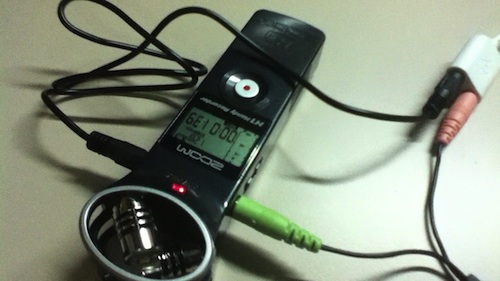Podcast: Play in new window | Download (Duration: 32:01 — 14.7MB)
It took us a while to get back in the groove but we’re back and covered some Mobile World Congress 2012 news.
HTC
- new HTC One series unveiled
- Superfast photo capture: 0.7 seconds to take a photo , 0.2-seconds autofocus
- Capture a photo in the midst of recording HD video
- 25 gigabytes of free Dropbox space for two years
- All devices: Android 4.0 (ICS), HTC Sense 4, Bluetooth 4.0, Beats Audio
- One X & One XL
- 4.7″ (1280×720) HD screen
- X:
- 1.5 GHz, quad core
- 32GB storage, 1GB RAM
- UMTS: 850/900/1900/2100 MHz
- XL:
- 1.5 GHz, dual core
- 16GB storage, 1GB RAM
- UMTS
- ATT: 850/1900/2100 MHz
- Asia/AUS: 850/900/1900/2100 MHz
- LTE
- ATT: B4/B17
- Asia/AUS: 1800/2600 MHz
- 8 MP camera (1080p video)
- F2.0 aperture and 28mm lens,
- 1.3 MP front camera (720p video)
- NFC
- No microSD slot
- microSIM
- One S: midrange
- 4.3″ (540 x 960) screen
- 1.5 GHz, dual core
- UMTS: 850/900/2100 MHz
- 16 GB storage, 1 GB RAM
- 8 MP camera (1080p video)
- F2.0 aperture and 28mm lens,
- VGA front camera
- microSIM
- No microSD slot
- UMTS: Europe/Asia: 850/900/2100 MHz
- One V: budget
- 3.7″ (800×480) screen
- 1 GHz CPU
- 5 MP camera (720p video)
- 4 GB storage, 512 MB RAM
- Expansion slot: microSD slot
- UMTS: Europe/Asia: 850/900/2100 MHz
Sony
- Xperia S companion devices: Xperia P (mid range) and low end (budget)
- Overview: Reasonable screen size, dual core but Android 2.3 with ICS supposedly coming in Q2
- Sony Xperia P – mid range
- 4″ (960 x 540 pixels) Reality Display
- 1 GHz , dual core
- Android 2.3 (Upgrade to Android 4, Ice Cream Sandwich, planned in Quarter 2 2012)
- 8 MP camera (1080p video)
- 0.3 MP (VGA) front camera
- 2D and 3D panoramic images.
- 16GB flash storage. 1GB RAM
- NFC
- UMTS: 850, 900, 1900, 2100
- Sony Xperia U – budget
- 3.5″ (854 x 480) Reality Display
- 1 GHz dual core
- Android 2.3 (Upgrade to Android 4, Ice Cream Sandwich, planned in Quarter 2 2012)
- 5 MP camera (720p video)
- 0.3MP (VGA) front camera
- 4GB storage, 512MB RAM
- UMTS
- 900, 2100 MHz (Global except Americas)
- 850, 1900, 2100 MHz (Americas)
Huawei
- Press release: Huawei releases their own quad-core CPU said to be better performing and lower power consumption
- Overview: 4.5” 720p phone screens with ICS
- Ascend D Quad
- 4.5″ (1280×720) screen
- Huawei quad core 1.2GHz/1.5GHz
- Android 4.0
- 8 MP camera (1080p video)
- 1.3 MP front-facing camera
- 8GB storage, 1GB RAM
- UMTS: 850/900/1700/1900/2100 MHz
- Ascend D Quad XL
- 2500mAh vs standard 1800mAh in Ascend D Quad
- Ascend D1
- 4.5″ (1280×720) screen
- 1.5 GHz dual core
- Android 4.0
- 8GB storage, 1GB RAM
- UMTS: 850/900/1700/1900/2100 MHz
- MediaPad 10 FHD
- 10” (1920 x 1200) IPS screen
- 1.5 GHz K3 quad-core processor
- Android 4.0
- 8 MP camera
- 1.3 MP front camera
- 2G RAM
Viewsonic
- Dual SIM phones
- ViewPhone 4s
- 3.5″ (640×960) screen
- 1GHz processor
- 5 MP rear camera
- 0.3 MP (VGA) front camera
- Android 4.0
- Dual SIM
- ViewPhone 5e
- 5″ (800×480) screen
- Android 4.0
- Dual SIM
- ViewPhone 4e
- 3.5″ (480×320) screen
- 650MHz
- Android 2.3
- 512MB of RAM
- 3MP camera
- Dual SIM
Samsung
- Galaxy Note 10.1
- 10.1 1280 x 800 TFT LCD
- Android 1.0
- 64GB storage
- 3 MP camera, 2 MP front camera
- Pressure sensitive S-Pen
- Preloaded with specially designed versions of Adobe Photoshop Touch, Adobe Ideas and other graphical software items, users can draw graphics and sketches and edit images on the device
- Split screen option: , users can ‘break’ the 10.1-inch display in two, with S Note on one side, and a live web-browsing or video playing window on the other side.
- Galaxy Beam
- 4″ (800×480) display
- 1GHz dual-core processor
- Android 2.3
- TI DLP nHD (640 x 360) Projector built into phone
Nokia
- Nokia Lumia 610
- 3.7″ (800 x 480) LCD screen
- 800MHz + 256mb memory
- Most affordable Lumia smartphone yet
- WinPhone 7.5
- UMTS: 850/900/1900/2100 MHz
- No microSD slot
- Nokia 808 PureView
- 4″ (640 x 360) AMOLED screen
- 1.3GHz CPU
- 41 MP camera sensor
- Typical 5 MP photos utilizing 7 pixels to 1 ‘superpixel’ for better image quality
- Lossless video zoom: 1080p 4x, 720p 6x
- Symbian, S3 Belle
- UMTS: 850/900/1700/-21001900/2100 MHz
- NFC

